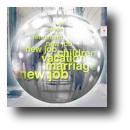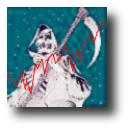|
|
| |
 + A whirlpool of numbers
+
+ A whirlpool of numbers
+
The Riemann Hypothesis is probably the
hardest unsolved problem in all of mathematics,
and one of the most important. It has to do with
prime numbers - the building blocks of arithmetic.
Nick Mee, together with Sir Arthur C. Clarke,
tells us about the patterns hiding inside numbers.
|
|
 + How maths can make you rich and famous: Part II
+
+ How maths can make you rich and famous: Part II
+
One million dollars is waiting to be won by anyone who can solve one
of the grand mathematical challenges of the 21st century.
In the second of two articles, Chris
Budd looks at the well-posedness of the Navier-Stokes equations.
|
|
 + Model behaviour
+
+ Model behaviour
+
To study a system, mathematicians begin by
identifying its most crucial elements, and try to
describe them in simple mathematical terms.
As Phil Wilson tells us,
this simplification is the essence of mathematical
modelling.
|
|
 + The crystal ball
+
+ The crystal ball
+
If you had a crystal ball that allowed you to see your
future, what would you arrange
differently about your finances?
Plus talks to the Government Actuary, Chris Daykin
about the pensions crisis, and how actuaries use
statistical and modelling techniques to plan for all
our futures.
|
|
 + Career interview: Primary teacher +
+ Career interview: Primary teacher +
Whether you love maths or hate maths, your opinions
on the subject were probably formed early.
So primary
teachers have a vital role to play in promoting
mathematical skills. Plus meets primary
teacher and maths coordinator Maureen Matthews.
|
|
| |
|
Coming up in the next issue...
 All of science can be regarded as motivated by
the search for rules behind the randomness of nature,
and attempts to make prediction in the presence
of uncertainty. Join Plus in the
search for pattern and order in chaos.
All of science can be regarded as motivated by
the search for rules behind the randomness of nature,
and attempts to make prediction in the presence
of uncertainty. Join Plus in the
search for pattern and order in chaos.
 In 1859, the German mathematician Bernhard Riemann discovered a
mysterious music that would explain the enigma of prime numbers. For
centuries, the primes seemed like random noise but Riemann thought he
could see a pattern finally emerging.
Following on from Nick Mee's 'A whirlpool of numbers' in this issue,
Marcus du Sautoy tells Plus more about a hypothesis that
remains unproved 144 years later.
In 1859, the German mathematician Bernhard Riemann discovered a
mysterious music that would explain the enigma of prime numbers. For
centuries, the primes seemed like random noise but Riemann thought he
could see a pattern finally emerging.
Following on from Nick Mee's 'A whirlpool of numbers' in this issue,
Marcus du Sautoy tells Plus more about a hypothesis that
remains unproved 144 years later.
|
|
| |
| |
|
Two popular features from our back issues...
|
| |
|
From Issue 12 - Sept 00
|
 + Death and statistics +
+ Death and statistics +
Actuarial science began
as the place where two branches of mathematics meet:
compound interest and observed mortality statistics.
Financial planning for the future is
therefore rooted firmly in the past.
John Webb takes us through some of the mathematics
involved, introducing us to some of the colourful
characters who led the way.
|
|
| |
|
From Issue 20 - May 02
|
 + Going with the flow
+
+ Going with the flow
+
Fluid mechanics is the study of flows in both liquids
and gases, and is therefore enormously important in
understanding many natural phenomena, as well as in
industrial applications.
Geophysicist Herbert Huppert tells us what happens when
two fluids of different densities meet, for example
when volcanos erupt and hot ash-laden air is
poured out into the atmosphere.
|
|


